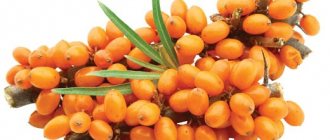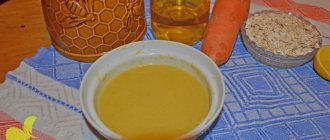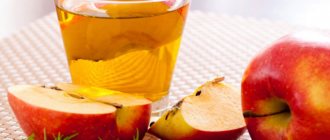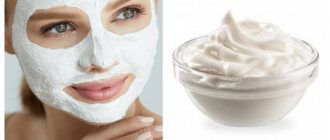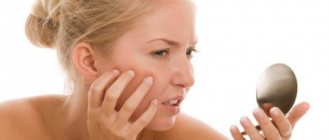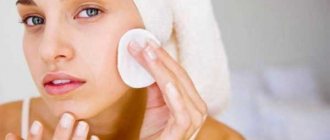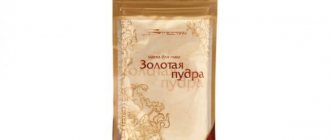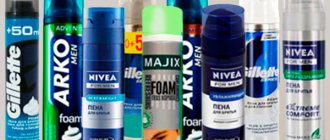What is fruit peeling?
Fruit peeling is a cosmetic procedure used to cleanse the surface layers of the skin, activate restoration processes, eliminate acne, fine expression wrinkles, and hyperpigmentation. It is carried out with special fruit acids.
The method is popular mainly among young women, as it has been noted that in people over 45 years of age, the effectiveness of its use is noticeably reduced. TCA peeling, PRXT33 peeling, and salicylic peeling are more suitable for this age. This occurs as a result of the fact that exfoliating superficial peeling is able to cope with fine wrinkles and does not have the proper effect on deep ones.
Which fruit acids have the properties necessary for peeling and regeneration?
- Lactic acid. There is often a misconception that this acid can only be found in milk and dairy products. However, its content is high in grapes, apples and even tomatoes. Due to the fact that lactic acid is a component of the natural moisturizing factor, it can be used by people with dry skin types. In addition, as a result of its gentle action on melanin, it has good whitening properties. Lactic acid is also used when performing milk peeling.
- Wine acid. High-quality wine and grapes contain this acid in combination with the active polyphenol resveratrol. This combination has powerful antioxidant properties, protects against ultraviolet rays, and has a rejuvenating effect on the skin of exposed parts of the body (face, hands).
- Glycolic acid. Sources of acid are sugar cane and grapes. The low molecular weight allows it to easily and freely penetrate into the deep layers of the skin and, by acting on melanin, lighten it. Glycolic acid is also used for glycolic peeling.
- Apple acid. This acid is found in apples and, not surprisingly, in tomatoes. It stimulates the activation of processes responsible for the regeneration and restoration of the skin after peeling.
- Lemon acid. All citrus fruits, especially lemons, are rich in this acid. It has a weak antiseptic effect, which helps protect the skin from the action of bacterial and viral agents. Natural antioxidant – rids the body of free radicals.
Anti-aging
With regular use of a variety of self-made or ready-made cosmetics with a noticeable anti-aging effect, it is possible to provide the skin with a magnificent well-groomed appearance. Unusual options are of interest.
Rejuvenating mask with elk milk
The brand “Granny Agafya’s Recipes” presents a type of innovative anti-aging mask for any skin type. The exotic composition of the product from the “Agafia Bathhouse” line is attractive.
Expert opinion
WE RECOMMEND!
Based entirely on natural raw materials.
The dominant component is elk milk, valued for its high nutritional value. In combination with Siberian medicinal plants, when used systematically, it provides active smoothing and tightening of the skin, moisturizing, regeneration, prevention of age-related changes, and evenness of shade.
Sheet mask with donkey milk
The South Korean company Elizavecca produces a tissue rejuvenating variety of Cream Mask Pack under the brand name Silky Creamy Donkey Steam based on donkey milk. This product is valued for its protein content that promotes collagen production.
The skin becomes soft, smooth, and healthy in color. The aging process gradually slows down, moisturizing and softening the dermis is ensured. Leave the mask on for an average of 20 minutes. After removing it, lightly massage your face with your fingertips, driving in the remaining product.
Night mask with milk
The assortment of the South Korean brand Imselene includes a night mask called DONKEY MILK HOLIC, the anti-aging effectiveness of which is based on the inclusion of nutrient-rich donkey milk in the structural formula. Use before bedtime, washing off the residue during the morning hygiene procedure. After such a session, the skin becomes moisturized, smooth, soft, and fresh-looking.
Homemade moose milk mask
If you can purchase moose milk from a specialized farm, you can prepare a mask that provides amazingly quick rejuvenating results. It is recommended to mix the product with kaolin to form a cream and leave it on the face after spreading it in a thin layer until it dries.
The variety of milk masks allows you to easily select the appropriate option to solve a specific problem. It is important to follow the recipe recommendations when making your own formulations or instructions when purchasing ready-made varieties.
What are the features of multifruit peeling?
Despite the fact that fruit-acid peeling is a mild procedure, since, being superficial, it is gentle on the deeper layers of the dermis, it should be done in a salon. The percentage of active ingredients can be accurately determined by an experienced specialist. You should also select acids and their concentrations individually so that chemical multifruit peeling is safe and most effective.
Acids for the face - specificity of impact.
All acids exfoliate. This is used for peeling.
Read more about peelings.
What is facial peeling?
Acid peeling for face.
Enzyme peeling for face.
In addition to the exfoliation effect common to all, each acid has its own specific effects. Specific features are effects different from exfoliation.
Hydration.
Anti-inflammatory effect.
Remodeling action.
They depend on the chemical characteristics of the particular acid, its concentration and the condition of the skin. Therefore, it is necessary to understand when acids exfoliate and when they have other specific effects.
What are the indications for using fruit peeling?
Fruit peeling is recommended in the following cases:
- The appearance of the first expression wrinkles. The active production of collagen and elastin by fibroblasts under the influence of fruit acids allows you to even out skin texture, eliminate stretch marks, and restore tone.
- Photoaging. Ultraviolet rays easily penetrate into the deep layers of the skin, dry it out and at the cellular level contribute to the appearance of free radicals, which leads to premature aging. In this case, even homemade fruit peeling has sufficient antioxidant protection to preserve youth.
- Acne rashes. The main factors leading to the appearance of this problem are: increased production of thick sebum and narrowed openings of the excretory ducts of the sebaceous glands. This procedure can regulate the functioning of the glands, expand pores, and counteract the development of inflammatory processes.
- Hyperpigmentation. The appearance of age spots occurs due to increased production of melanin and its uneven distribution in skin cells. Fruit acids reduce the synthesis of melanin granules by activating complex enzyme systems, and also distribute them evenly.
- Increased dryness of the skin. Lactic acid is one of the components of the natural moisturizing factor, which helps retain moisture in the surface layers of the dermis.
7 cases when there are contraindications to the use of fruit peeling
Fruit peeling is not recommended when:
- There may be hypersensitivity to the components of the peeling agent. In this case, you should consult a cosmetologist before starting the procedure.
- There is a tendency to allergic reactions. Perhaps you should choose a more gentle method of cleaning the skin.
- There are moles or neoplasms in the area affected by peeling agents. The procedure is quite aggressive and can serve as a reason that affects the growth of education.
- A woman is pregnant or breastfeeding. It is not worth carrying out chemical peeling at this time, since any effect on the mother’s body affects the baby.
- The skin in the affected area is injured, there are abrasions and wounds. Fruit acids can support the inflammatory process in the wound area and also cause the formation of deep scars.
- Recently got a fresh tan. For 2-3 weeks after tanning, you should refrain from visiting a cosmetologist, as the peeling procedure will be ineffective.
- There are deep wrinkles and scars, extensive age spots. Superficial fruit peeling is not able to cope with these skin problems. In this case, it is used only as an additional means, before more serious cosmetic procedures.
Fruit peeling for the face at home - popular recipes
For home peeling, you can use several popular recipes that replace the use of concentrated solutions of fruit acids in the salon.
Pineapple mask
You should take a pineapple, peel it, cut it into rings 1 cm wide. Pass two rings through a blender. Mix four tablespoons of pulp with 2 tablespoons of honey. Apply a thin layer to cleansed facial skin. Leave for 5-7 minutes. Rinse off with warm water. Apply restorative cream.
Citrus mask
Mix 2 tablespoons of freshly squeezed citrus juice (orange, lemon or grapefruit) with the same amount of olive oil. Apply to cleansed skin for 10 minutes. Rinse with water.
Grape mask
Mix grape juice with olive oil in equal proportions. Leave on skin for 10-12 minutes. The mask has whitening properties.
Strawberry mask
Wash fresh strawberries, mash them by hand or put them through a blender. Mix with 2 tablespoons of honey. Apply to the face, excluding the eye area. The approximate exposure time is up to 15 minutes. When using natural masks, the mandatory one-week breaks, as with chemical peeling, can be avoided, and the course may not be limited to 10 procedures. In addition, excess freshly squeezed juice can be used for food.
Combined masks
Hyaluronic acid can be combined with other active ingredients. So, you can prepare masks according to the following recipes:
- With nicotinic acid. Components: hyaluronic acid (1 g) and nicotinic acid powder (30 g), water. Mix the powders and add water so that you get a homogeneous mass of thick consistency. Apply all over the face and leave until completely dry, then rinse.
- With glycerin. Ingredients: quinine (60 g), hyaluronic acid powder (2 g), zinc oxide (30 g), glycerin (45 g), water. Mix all ingredients, dilute with water until a homogeneous mass of thick consistency is obtained. Apply to face and leave until dry, then rinse.
- With egg white. Ingredients: proteins (3 pcs.), lemon juice (25 ml), lemon zest (from 2 fruits), oatmeal (40 g), hyaluronic acid powder (3 g). Mix all ingredients and apply to face. You need to remove it with a warm compress.
Such masks do not need to be done more than 2 times a week.
Fruit facial peeling at home: real reviews
Making fruit peeling at home is very easy and simple. For this I used the following ingredients:
- natural apple cider vinegar - 1 tsp;
- honey - 1 tsp;
- crushed sea salt - 1 tsp.
Mixed all the ingredients and applied to a cleansed face. I left it on for 10 minutes and massaged my face a little at the last minute. I washed it off with warm water and applied a nourishing cream.
After 2 hours, the skin calmed down and the results were obvious: redness decreased significantly, the skin became very soft. This peeling works and is quite inexpensive.
Moisturizing
Analyzing the top best self-made milk masks, we can note varieties with excellent moisturizing characteristics.
Milk + clay
A cosmetic product can provide decent care for dehydrated, flaky skin by combining homemade soft cottage cheese with white powdered clay and thick, high-fat, high-quality sour cream. Take the components 1 tbsp. l. While stirring, gradually pour in the milk, trying to obtain a soft dough with the thickness of a cream without lumps. The average holding time for a quickly drying composition is 15 minutes.
Milk + honey
In order to eliminate the feeling of tightness, provide hydration and relieve flaking, owners of dry skin should carefully rub a tablespoon of warmed high-quality milk with a high concentration of fat and liquid honey at room temperature. This product is washed off a quarter of an hour after application.
Washing your face with milk
A simple washing procedure using milk allows you to moisturize dehydrated skin. In the evening, after washing off makeup and possible impurities from the face, mix high-fat milk with vegetable oil, maintaining a 3:1 ratio. Soak a cotton pad and wipe your face.
Then dilute 100 ml of chilled milk with such an amount of hot water so that the temperature of the liquid is comfortable for the skin, and wash. After two minutes, excess liquid is removed with a soft paper napkin or cotton swab. Distribute nourishing cream.

